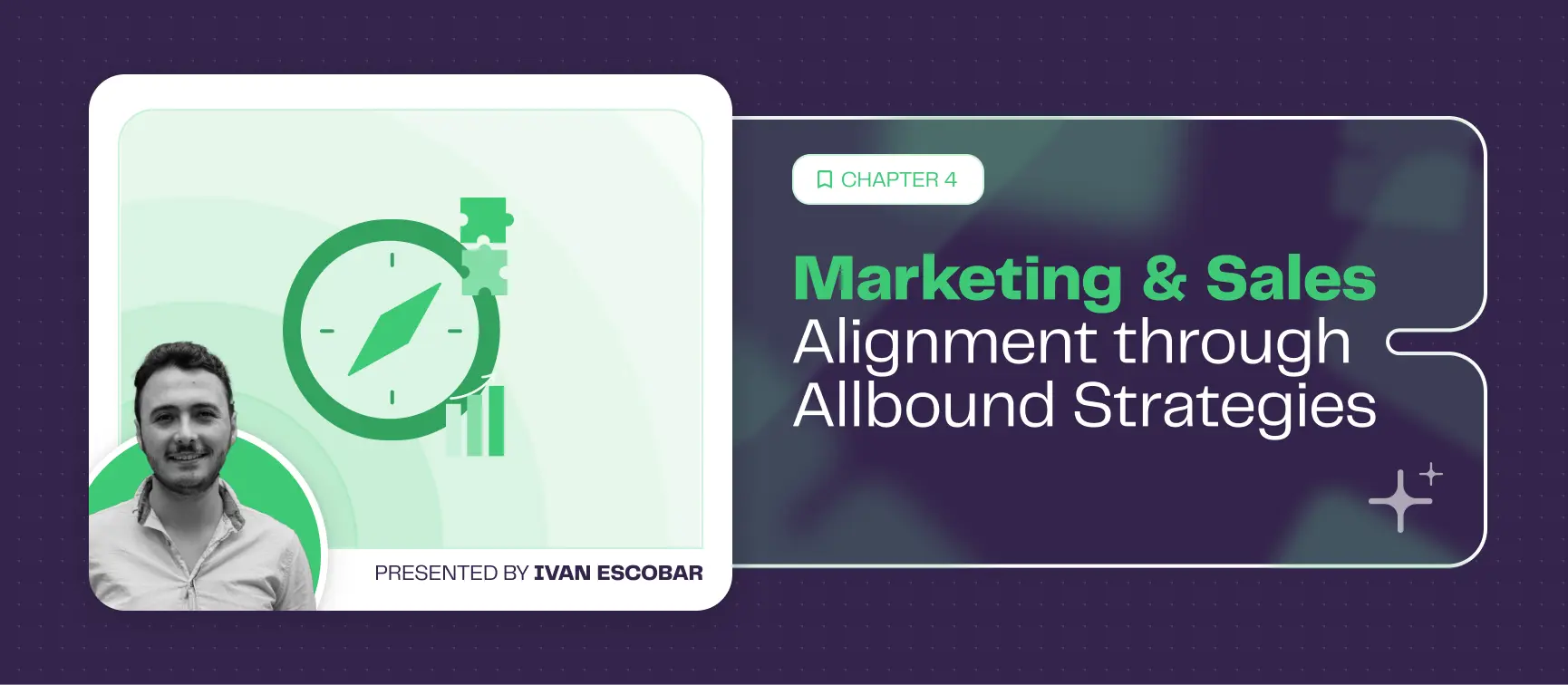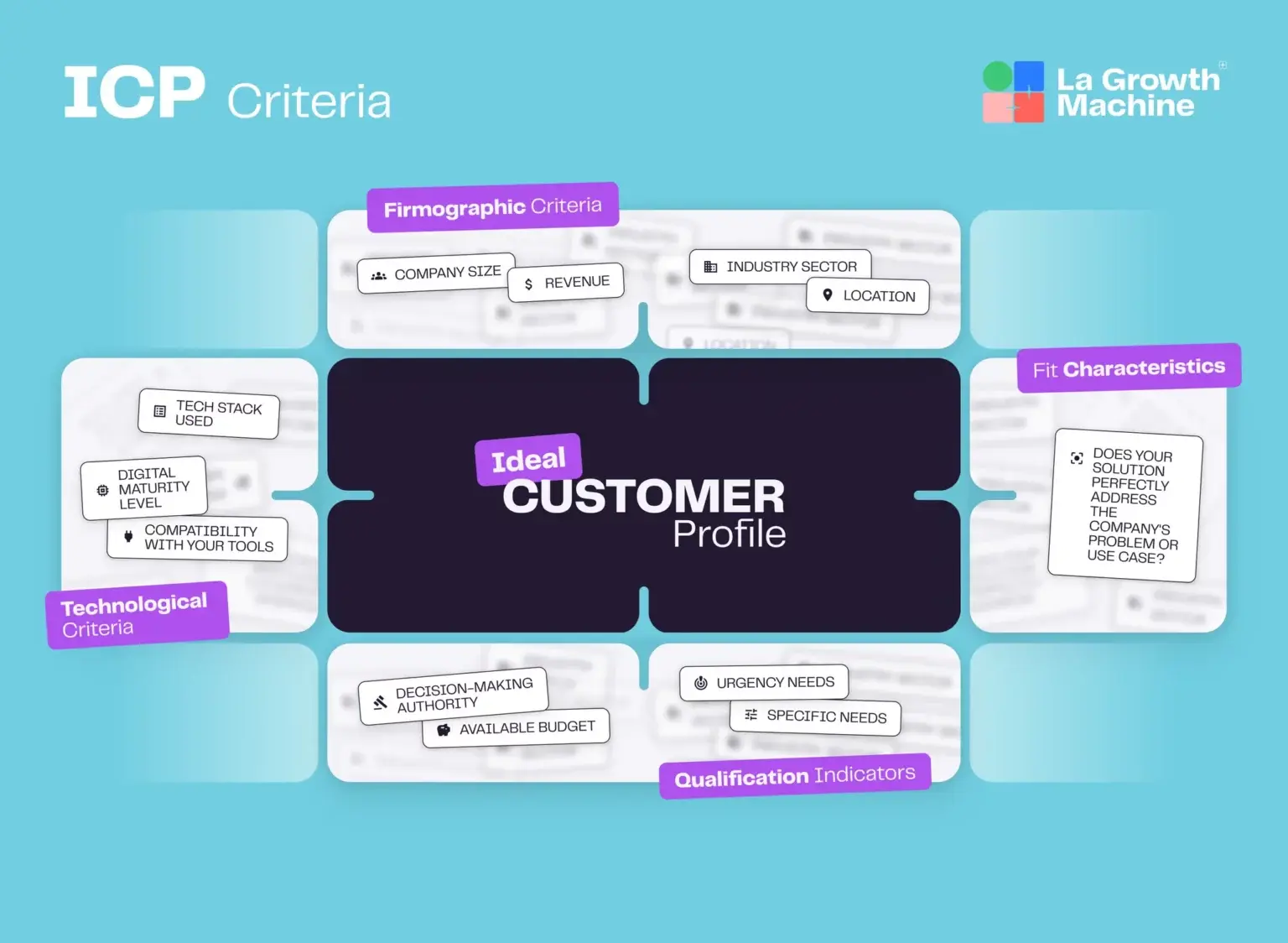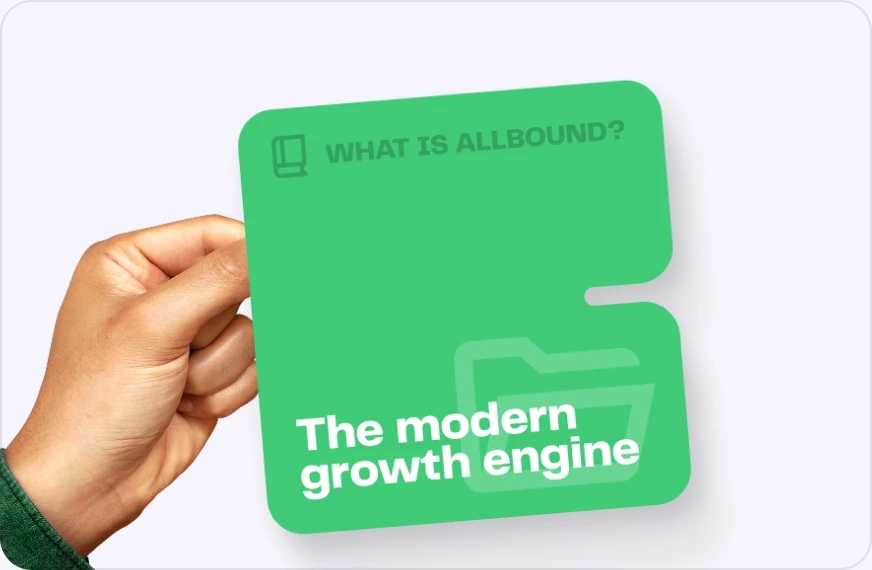
Stop treating sales and marketing alignment as a nice-to-have luxury. High-performing teams embrace the Allbound strategy to create seamless customer experiences across every touchpoint.
Here’s your practical roadmap to bridge the departmental gap and build the foundation for Allbound success.
Why should you align your sales and marketing teams?
The days of sales and marketing operating in separate universes are over. Creating real alignment means you need to:
- Clearly define each team’s roles and responsibilities,
- Establish collaborative routines that stick,
- Work toward shared long-term goals,
- Foster a unified culture where both teams win together.
A critical part of this alignment is knowing when sales should step in and when marketing should step back. Without this clarity, both teams risk chasing the same leads with conflicting approaches, confusing prospects, and burning resources.
Allbound addresses the pain points we know too well: sales teams frustrated by unqualified leads, and marketing teams wondering why their hard-earned leads go untouched. With aligned expectations and real accountability, both teams work smarter, not harder.
Yet 57% of organizations admit accurate alignment remains elusive. That’s not just a challenge: it’s your competitive opportunity if you’re ready to embrace the Allbound mindset.
Sales and marketing alignment: 4 actionable benefits
1. Faster deal closing
Your sales team gets leads with the context they need: maturity scores, decision-making authority, and engagement history. This precision targeting means reps spend their valuable time exclusively with prospects who are ready to buy, not educating those still kicking tires.
2. Powerful feedback loop
Every sales conversation becomes valuable market intelligence. When reps systematically capture objections, marketing can refine campaigns based on real-world insights, rather than assumptions or guesswork.
3. Enhanced social selling
Sales reps transform from product pushers into trusted advisors by leveraging marketing’s content ecosystem. When they share relevant industry insights and solution-focused content, they build credibility long before the formal pitch begins.
4. Resource optimization
No more duplicate efforts or mixed messages. With clear visibility across the customer journey, you deploy resources precisely where data shows they’ll have maximum impact, measuring joint outcomes instead of siloed metrics.
This collaborative approach is often referred to as ‘smarketing’, and it’s a prerequisite for effective Allbound strategy, allowing personalization at scale across both Inbound and Outbound channels.
The five prerequisites to align your sales and marketing teams
1. Define a shared ICP
Alignment starts with a crystal-clear picture of precisely who you’re targeting. An ICP (Ideal Customer Profile) details the companies that would get the most value from your solution while providing value to you as clients.
Don’t confuse ICPs with personas. While personas focus on individual roles, your ICP identifies the types of organizations most likely to become your best customers.
A solid ICP includes:
- Firmographics: The essentials about target companies—size, industry, revenue, location, and structure.
- Tech stack considerations: What tools are they already using, their digital maturity, and their compatibility with your solution?
- Qualification indicators: Their budget availability, decision-making authority, and specific needs that align with your strengths.
- Fit characteristics: How perfectly does your solution solve their problem, and does it match your profile for retention and growth potential?
A shared ICP delivers immediate benefits:
- Focused efforts on prospects most likely to convert.
- Better segmentation for more relevant messaging.
- Unified language between teams when discussing target accounts.

2. Clarify the sales funnel
Everyone needs a shared customer journey map, with clearly defined ownership at each stage. The traditional funnel stages need specific ownership and handoff points between sales and marketing.
This clarity prevents the all-too-common scenario where multiple team members reach out to the same prospect through different channels, creating a disjointed experience that kills deals before they start.
At each funnel stage, prioritize channels based on:
- Each channel’s unique strengths (LinkedIn for personal connection, email for detailed information)
- Lead volume generated per channel, focusing resources where you see the highest potential
- Conversion rate data showing which channels perform best at specific journey stages
3. Set shared goals
Sales and marketing teams naturally focus on different metrics. Marketers track CTRs and engagement, while sales teams live and die by demos booked and closed deals. Proper alignment requires macro objectives that both teams own together.
The most effective approach? A formal SLA (Service Level Agreement) that defines mutual commitments. This becomes your accountability framework, ensuring both departments understand their responsibilities to each other.
Your SLA should include:
- Consistent definitions for leads at various stages so everyone speaks the same language,
- Straightforward qualification process outlining how leads progress through the funnel,
- Specific timelines for lead handoffs to prevent prospects from growing cold,
- Lead volume and quality commitments from marketing,
- Follow-up rate and response time expectations for sales,
- Shared KPIs that align both teams around revenue and acquisition goals,
- Two-way feedback process for continuous improvement.
With these shared commitments, both teams become invested in each other’s success, making your entire revenue generation process more efficient.
4. Choose the right tool stack
The right tools facilitate collaboration, making it inevitable by connecting workflows and sharing data across teams.
- Select platforms that enable real collaboration: Choose systems with unified contact databases so everyone works from the same information.
- Prioritize seamless data integration: Ensure sales can see prospect engagement history and marketing can track which content drives conversions.
- Implement with intention: Start with shared dashboards showing full-funnel metrics so both teams understand their impact on the big picture.
Focus on mastering core functionality before adding complexity. Perfect implementation of essential features delivers more value than partial adoption of advanced capabilities.
As your systems grow more sophisticated, consider introducing hybrid roles like RevOps to bridge the departmental gap and ensure your technology supports alignment rather than creating new silos.
Looking ahead, AI-powered tools with dynamic lead scoring, next-best-action recommendations, and automated insights can help both teams stay aligned while working more efficiently (more on this in Module 6).
5. Embrace automation
The final prerequisite is leveraging automation to handle repetitive tasks and ensure your carefully designed processes get executed consistently.
Automation saves countless hours on lead qualification by using features like behavior-based scoring. This ensures leads are accurately assessed before reaching sales, improving efficiency and conversion rates.
Key processes ripe for automation include:
- Leads routing that instantly assigns new leads to the right rep based on territory or expertise.
- Engagement alerts that notify sales when prospects show high-intent behaviors,
- Cross-team reporting that keeps everyone informed without manual data collection,
- Follow-up sequences that ensure consistent communication throughout the buying journey.
An integrated tool like La Growth Machine centralizes your lead management and connects with your existing stack through integrations like HubSpot, Pipedrive or Zapier. This creates a seamless flow of information, eliminating manual data entry and reducing the risk of essential details slipping through the cracks.
Takeaways
The path to complete alignment isn’t always smooth, but organizations that commit to breaking down these traditional silos see real improvements in performance.
- The five alignment pillars create your allbound foundation:
– Define a shared ICP that both teams target.
– Clarify your sales funnel with clear ownership at each stage.
– Set shared goals through a formal SLA.
– Choose tools that connect workflows, not create new silos.
– Automate repetitive tasks to ensure consistent execution. - The payoff is substantial. Aligned organizations see up to 38% more closed deals, faster sales cycles, and more efficient resource allocation across the entire revenue generation process.
- Start where you are. You don’t need perfect alignment overnight. Create shared definitions and goals, then incrementally build your integrated processes and technology stack.
- Remember the ultimate goal. This isn’t about organizational charts—it’s about creating seamless experiences for prospects that convert more efficiently into loyal customers.
Your Allbound strategy starts here—when sales and marketing finally act as one team.
